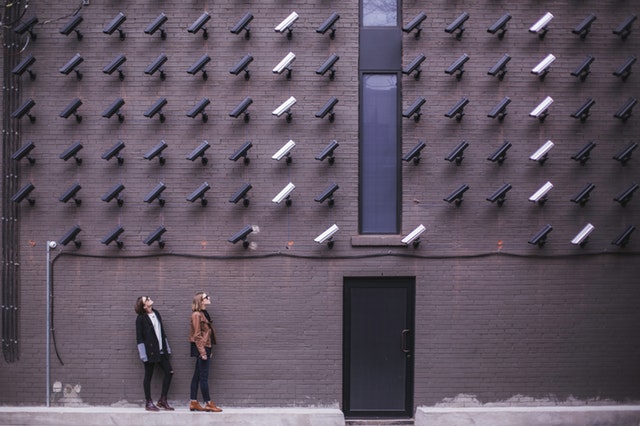As I write this article, I hear the lilting melody of Alicia Keys’ tribute to New York City:
“Hail a gypsy cab, take me down from Harlem to the Brooklyn Bri-i-i-i-idge…”
Can you hear it? There are just certain things that jump to our minds when we think of New York.
I think of hot dogs, Central Park, awesome shopping, coffee shops, marquee lights on Broadway and “bouquets of sharpened pencils” (yet another New York reference for you movie buffs).
What else comes to mind? Taxis… lots and lots of yellow taxis. In the era of the sharing economy, that also means lots and lots of Uber and Lyft drivers.
But did you know that an outdated law is keeping New York consumers from taking advantage of a convenience that millions of drivers in other states already enjoy?
In New York, a law requires consumers wanting to sign up for new auto insurance coverage to first have their vehicles inspected by their insurance companies. The law was enacted in the 1970s and was designed to protect against insurance fraud.
These days, instead of preventing fraud, the law mostly produces frustration. Individuals must have their vehicles physically inspected by a licensed insurance agent or bring them to an inspection site before they can activate their auto insurance coverage.
This inspection requirement is ON TOP of the annual inspection required for all New York vehicles. So, someone who owns multiple vehicles could potentially be required to do multiple inspections throughout the year!
See also: On-Demand Workers: the Implications
What else does this mean exactly?
Old Technology for New Times
Well, for starters, a lot of headaches, hassles and inefficiency for consumers. They frequently report:
- Insurance coverage lapsing due to failure to complete the inspection
- Missing work to complete the inspection
- Long wait times at inspection sites
- Inconvenient hours at inspection sites
- Inspection sites with inconvenient locations
- Students at out-of-state colleges needing to drive their cars all the way back to New York to complete the inspection OR re-register their vehicles in another state
- Insurance companies receiving inaccurate information about inspected vehicles
That’s a lot to deal with for the average car owner, who may be balancing a full-time job, college courses and a family and has precious little time in which to get an inspection done.
But what choice do they have?
For now, none.
Mobile Innovation Changes Everything
But advances in mobile technology are radically changing the world we live in, empowering consumers to get work done conveniently and efficiently. Smartphones are at the core of this radical change.
In fact, according to recent statistics by GO-Global, not only are smartphones being used by more people than ever, but those people are
spending 52% of their time on those smartphones using mobile apps.
That’s incredible!
Statistics also indicate that 18- to 24-year-olds use more mobile apps than any other age group.
See also: How to Embrace Workforce Flexibility
It’s no wonder that the
global revenue from mobile apps has risen dramatically over the last few years from $35 billion in 2014 to $58 billion in 2016, and in 2017 is expected to hit $77 billion.
Why Are Mobile Apps so Popular?
1. Mobility comes in all shapes and sizes
Almost 80% of consumers around the world have smartphones, 50%-plus have tablets, nearly 10% have wearable mobile devices and 7% own all three.
That high level of usage has had a significant effect on business practices around the world.
2. Location-Based Services (LBS)
Most devices currently have GPS capabilities that empower users to get real-time information, right here, right now.
3. Internet of Things (IoT)
Again, this advancement in technology provides users with real-time control and information, regardless of where they are.
Forgot to turn your lights off at home? No problem. Just log into your smart home app and do it from the comfort of your office.
4. Virtual and Augmented Reality (VR and AR)
This technology is revolutionizing how we interact with each other and with other software systems. Mobile app developers are expecting tremendous growth in this area.
In short, these mobile apps allow people to
find the goods and services that they need quickly, easily and cost-effectively. In other words, the middlemen and gatekeepers have been all but eliminated.
Combining Mobility With Manpower
So, let's apply those capabilities to the New York, with its outdated law that requires drivers to obtain a vehicle inspection before they can activate their insurance coverage. With today's technology, the answer just isn't that hard. Drivers in other states already have an alternative: smartphone-based vehicle inspection.
WeGoLook has developed mobile technology that puts a large mobile workforce at the fingertips of consumers who are too busy or simply too far away to obtain in-person inspections. Others may have their own solutions; ours looks like this:
- A client needs an inspection, and orders a vehicle inspection report from WeGoLook via the website or mobile app.
- A “Looker” is dispatched to perform the inspection. (The number of Lookers has grown from 7,400 in 2012 to more than 30,000 in 2016.)
- The Looker manages all aspects of the inspection from scheduling to coordinating the different parties to preparing the final report.
- Throughout this process, the client can monitor real-time progress on the inspection via the mobile app’s online dashboard.
- The WeGoLook app also has photo and text support so that clients can capture the right angles and desired information needed for the report.
- A management team reviews the report for quality assurance and accuracy.
- The client receives the detailed report, quickly and conveniently and can download it directly from the app.
Given the power behind mobile technology and flexible workers, like WeGoLook’s Lookers, there is no reason consumers should be locked into doing their inspections at traditional inspection sites.
The use of flexible mobile inspectors can solve the problem of drivers having to physically take their vehicles to an inspection site. Mobile apps like WeGoLook’s also allow for "app consistency" -- that is, if a policyholder, insurance carrier and third-party inspector are all using the same platform, there is a better chance of a successful transaction. For savvier consumers, technology like WeGoLook’s app even opens the door for the consumer to self-inspect the vehicle. Certain states already allow self-inspection via smartphone for home inspections and claim inspections after an auto accident.
See also: A New Way of Thinking on Assets
In New York, however, for the pre-insurance inspection requirement, a new law would need to be enacted to empower consumers to self-inspect their vehicles using a smartphone app. This dream scenario would give consumers the option of using a WeGoLook Looker to complete their inspection, of self-inspecting the vehicle using WeGoLook’s app or of completing the inspection via the traditional route.
WeGoLook: On-Demand Solutions That Save Time and Energy!
The beautiful thing about a mobile app service like WeGoLook is that it will offer consistent and trustworthy results regardless of who requests the report -- the policyholder, a third party or the insurance carrier.
So, if you’re a busy and productive citizen of New York state, why not save yourself a heap of time and energy? Smart use of technology benefits everyone involved.
So, this spring, I urge Albany lawmakers to enact a new law that would help consumers put today’s smartphone technology to better use. Let’s give New Yorkers smartphone-based options for their pre-insurance vehicle inspections.








